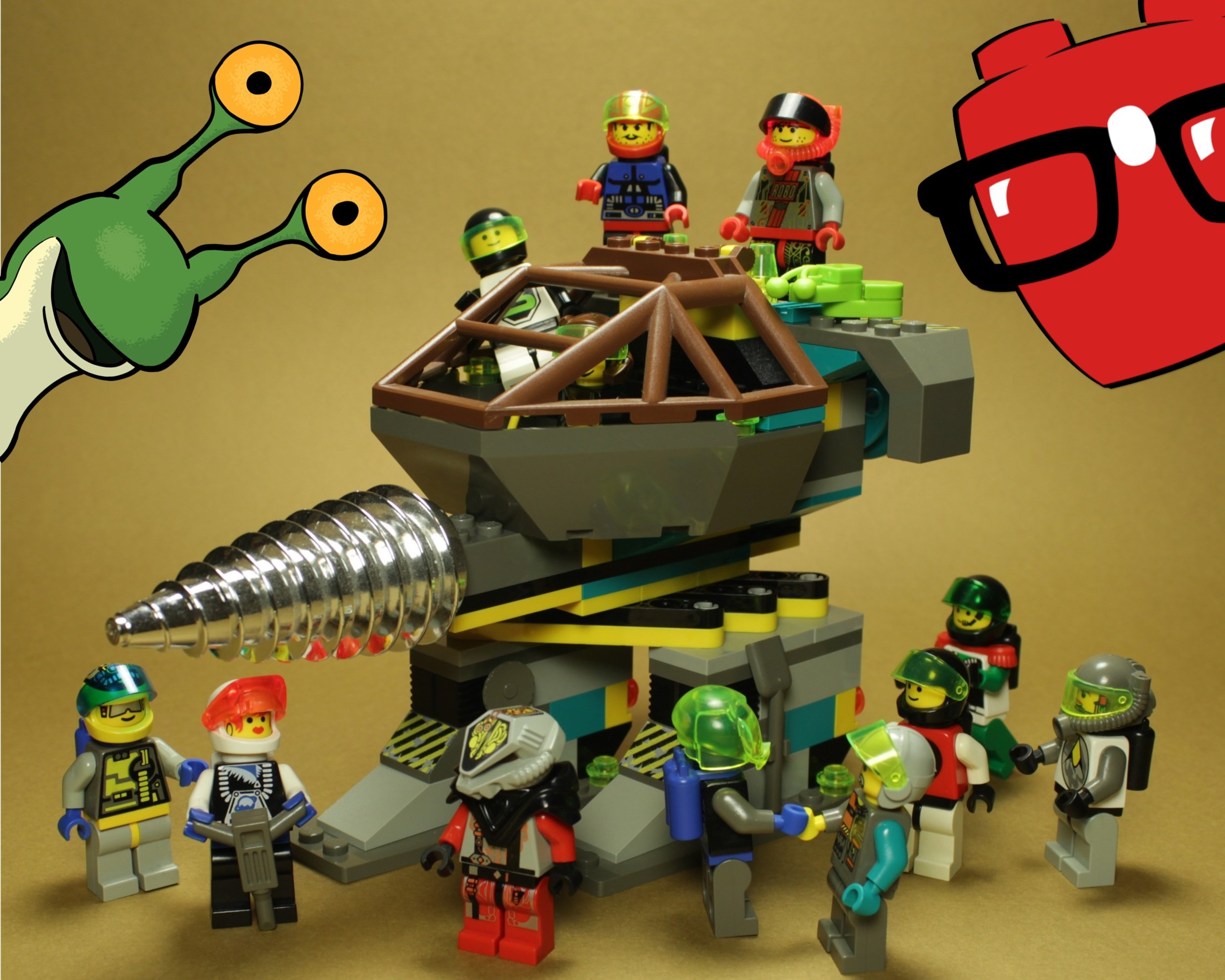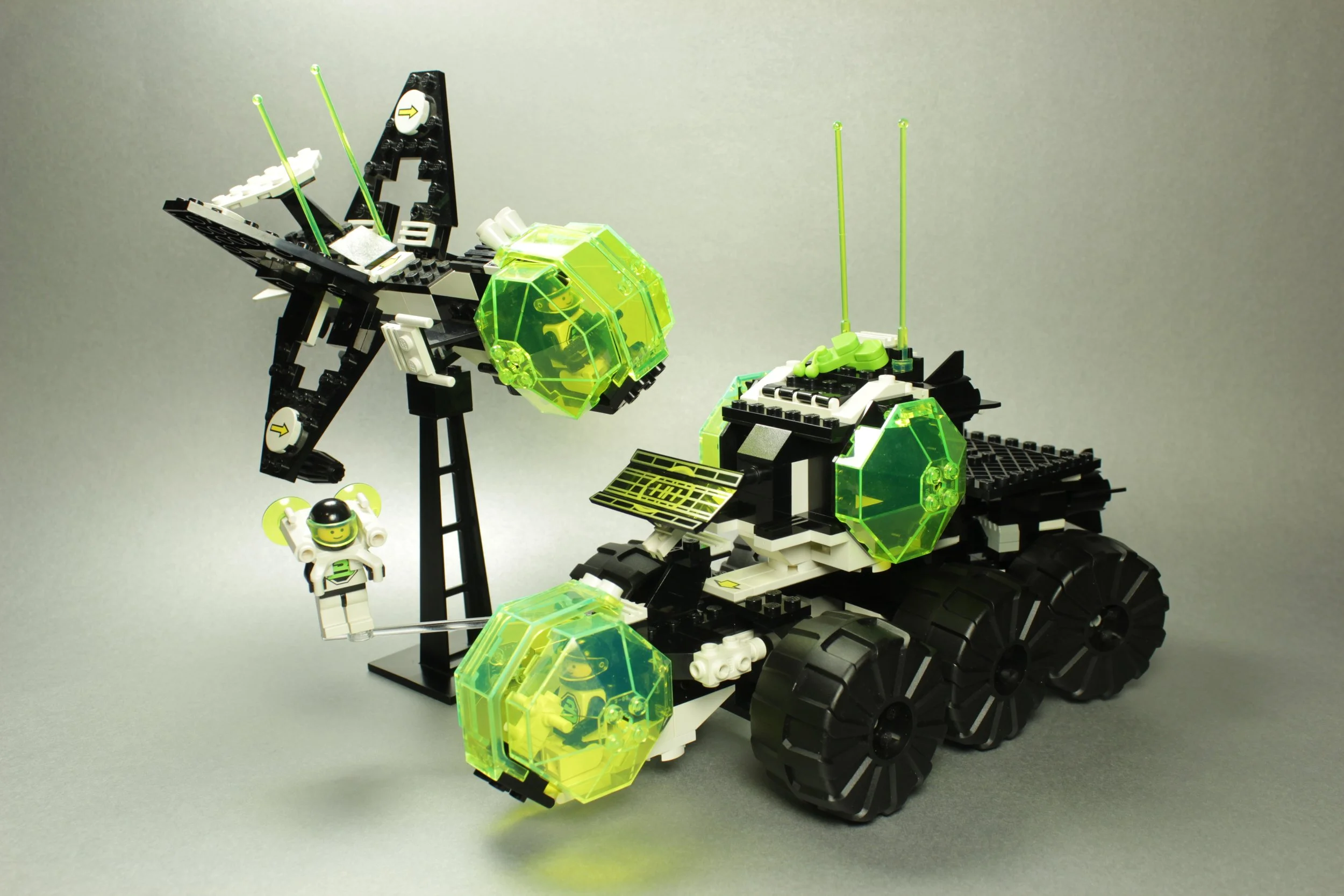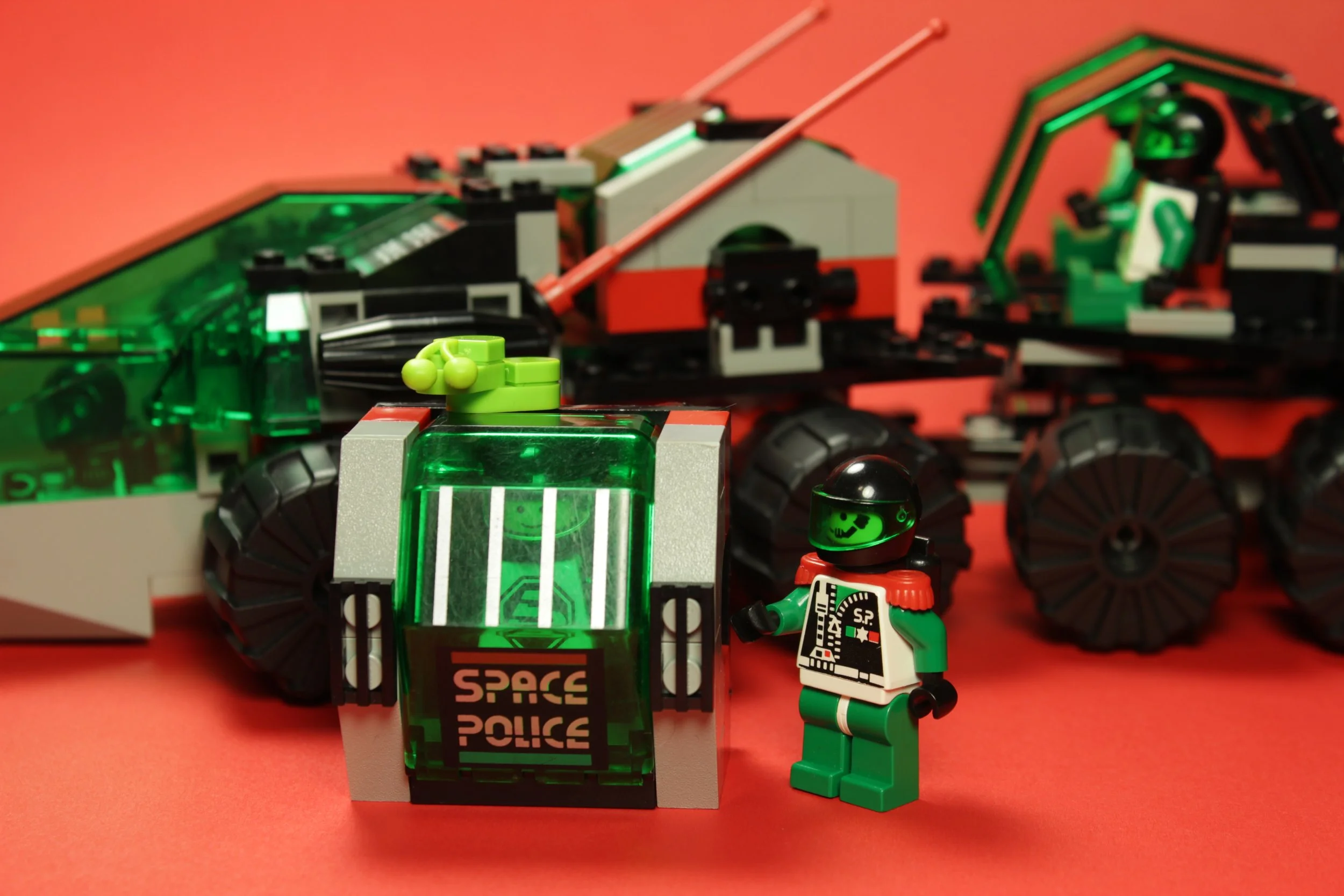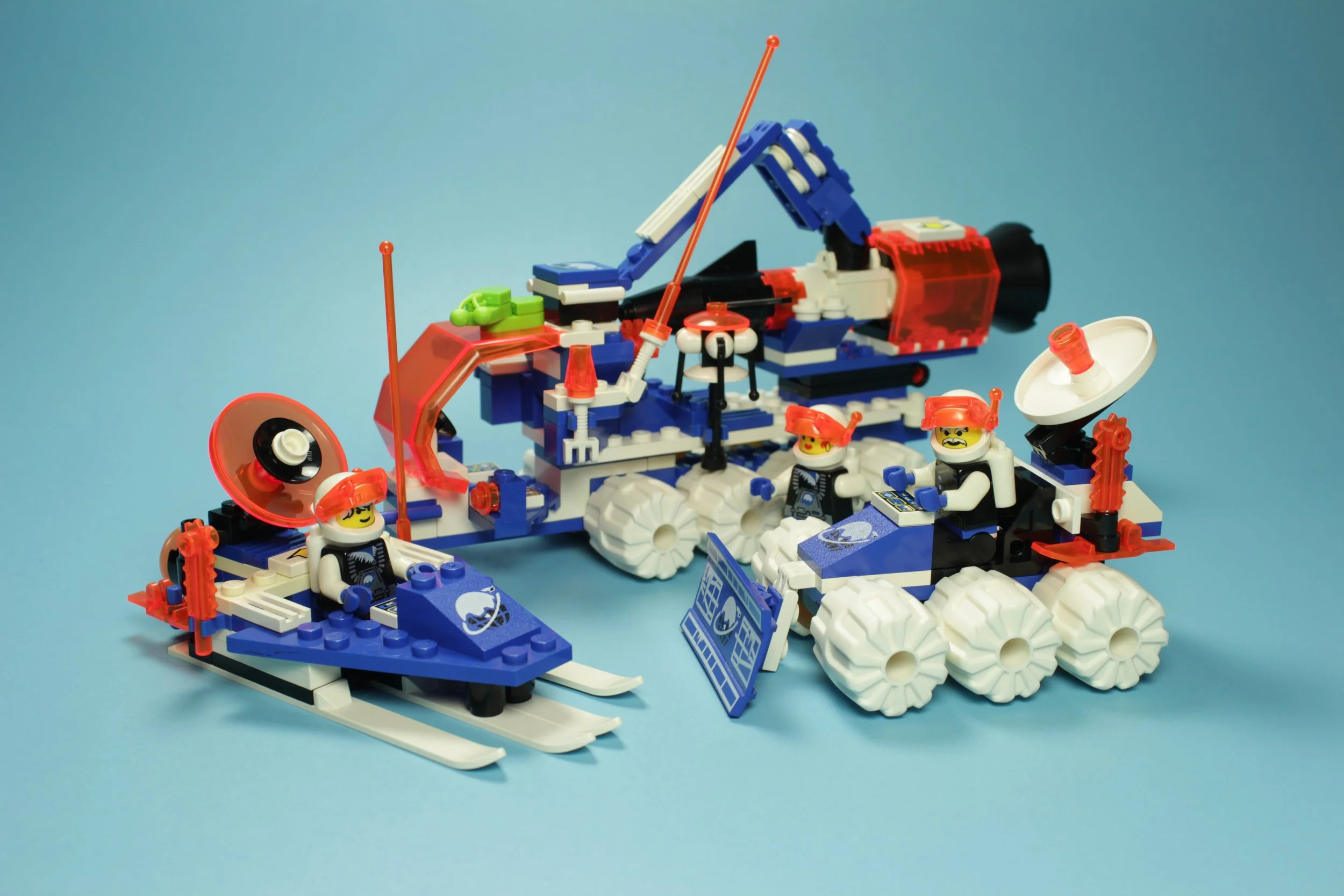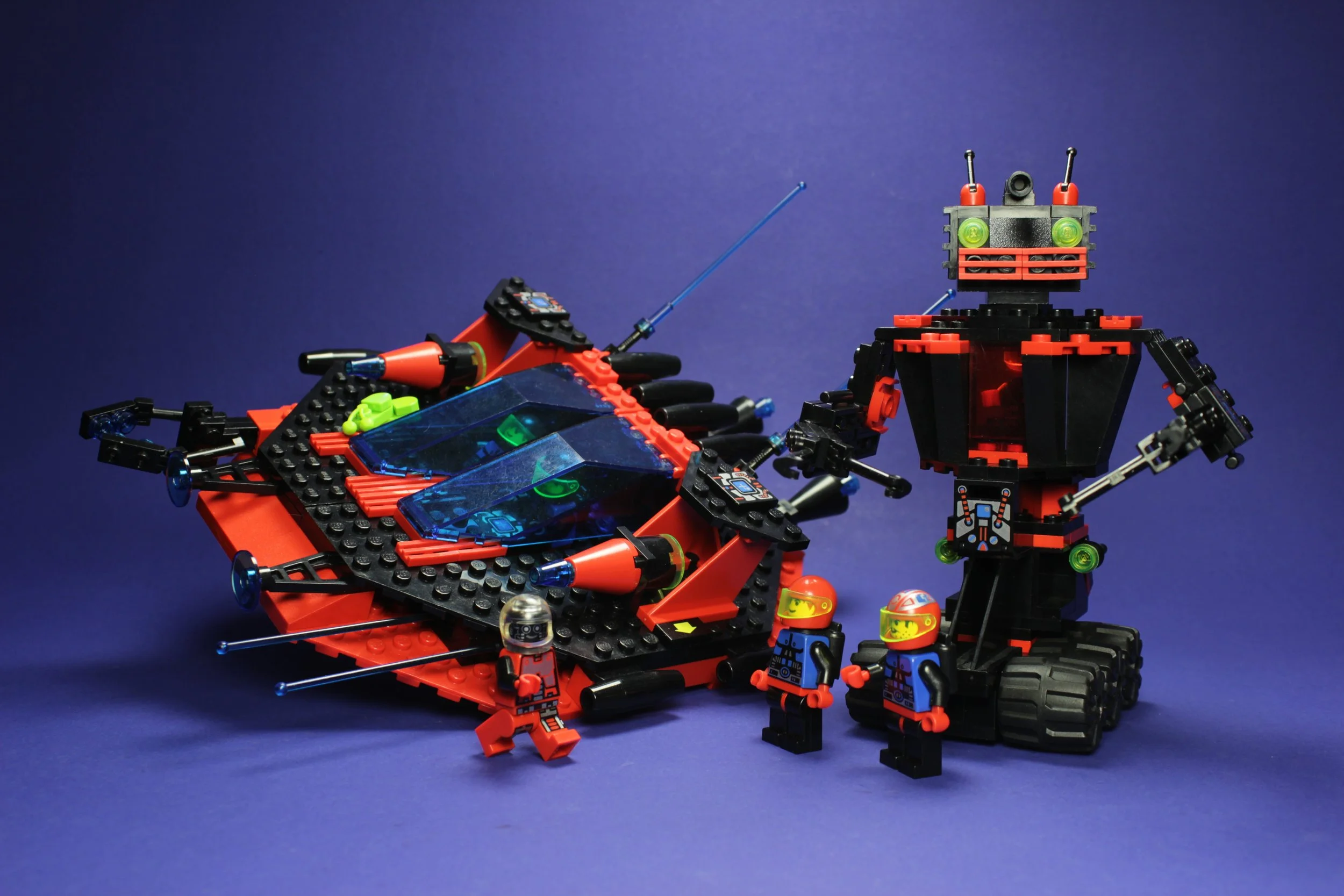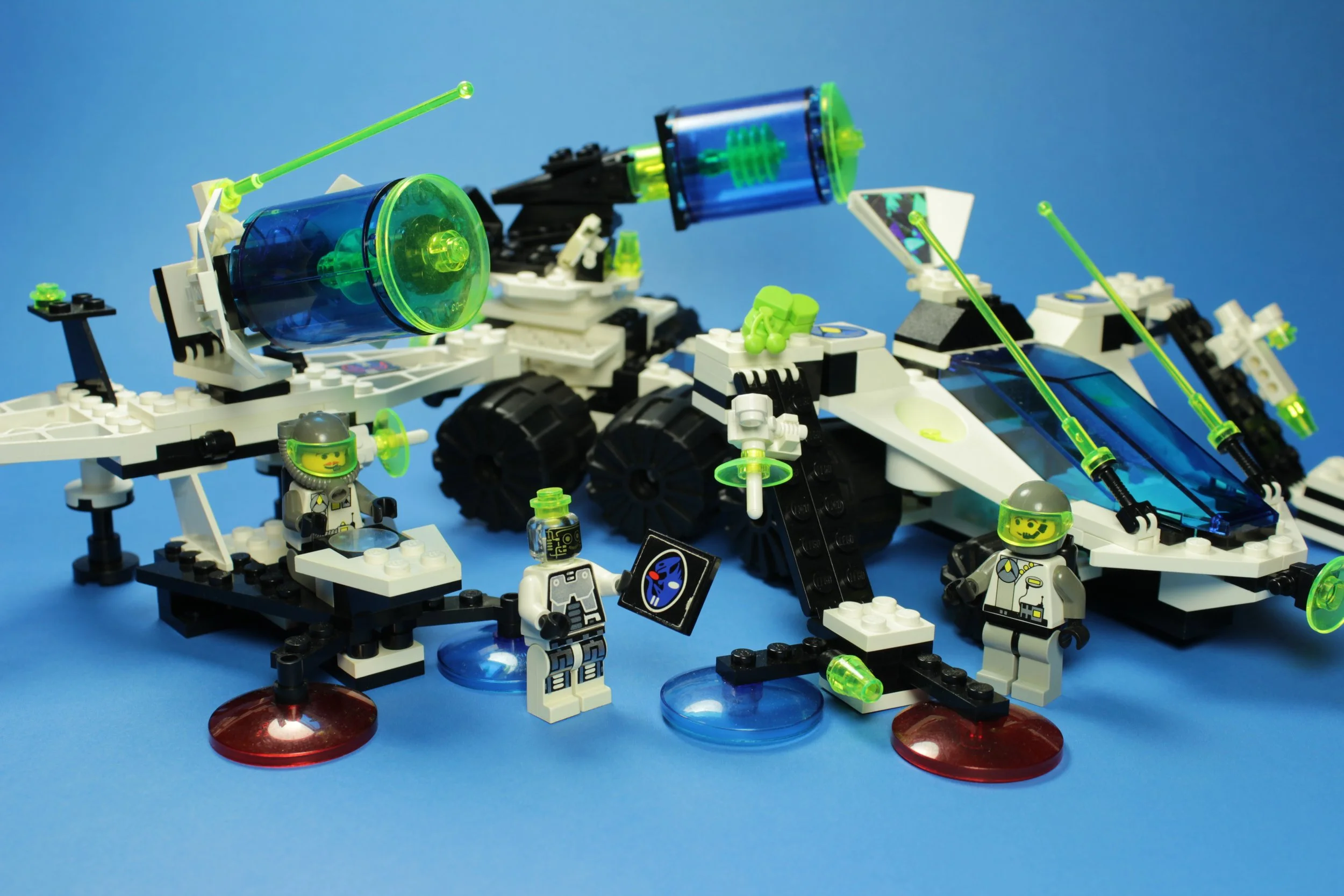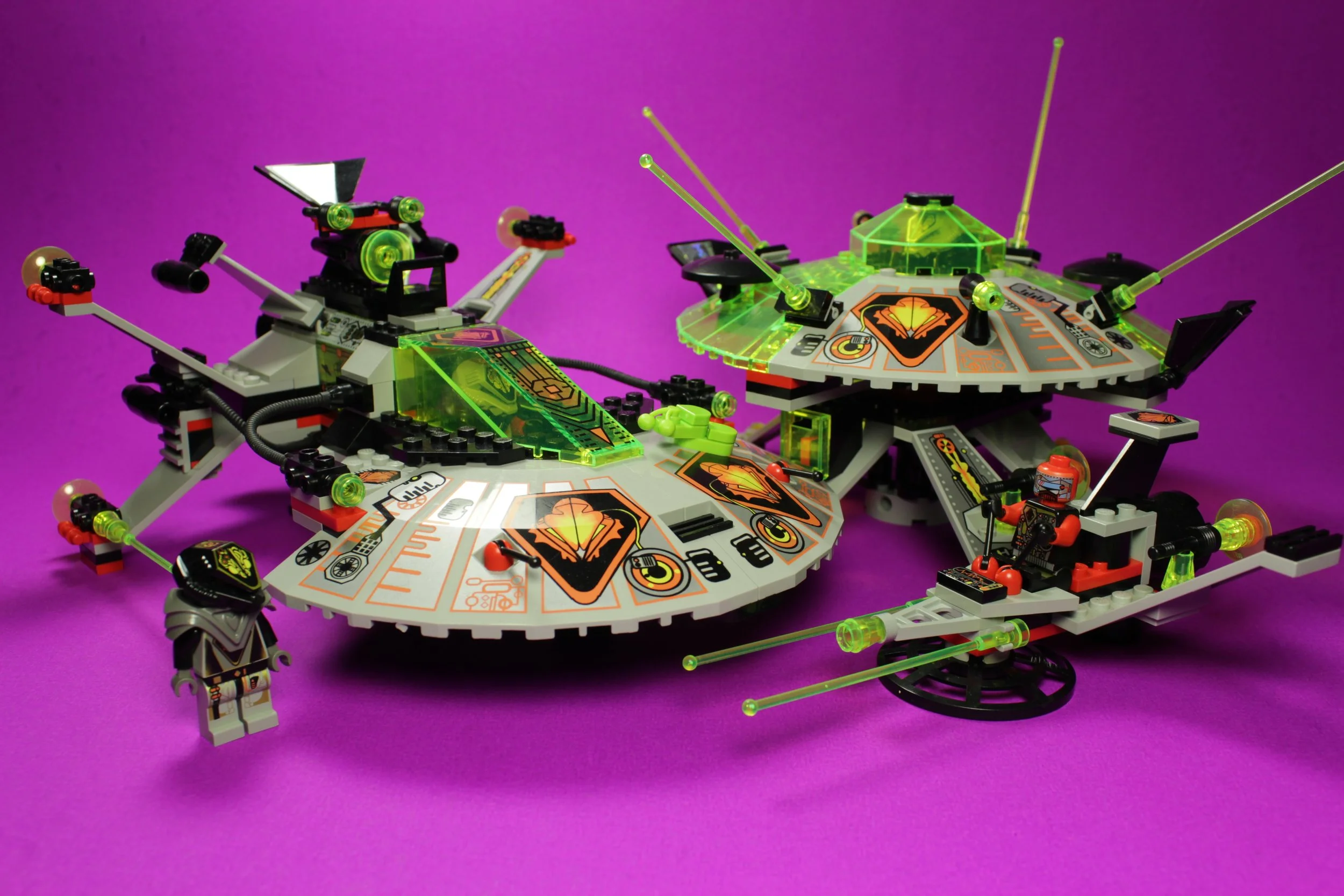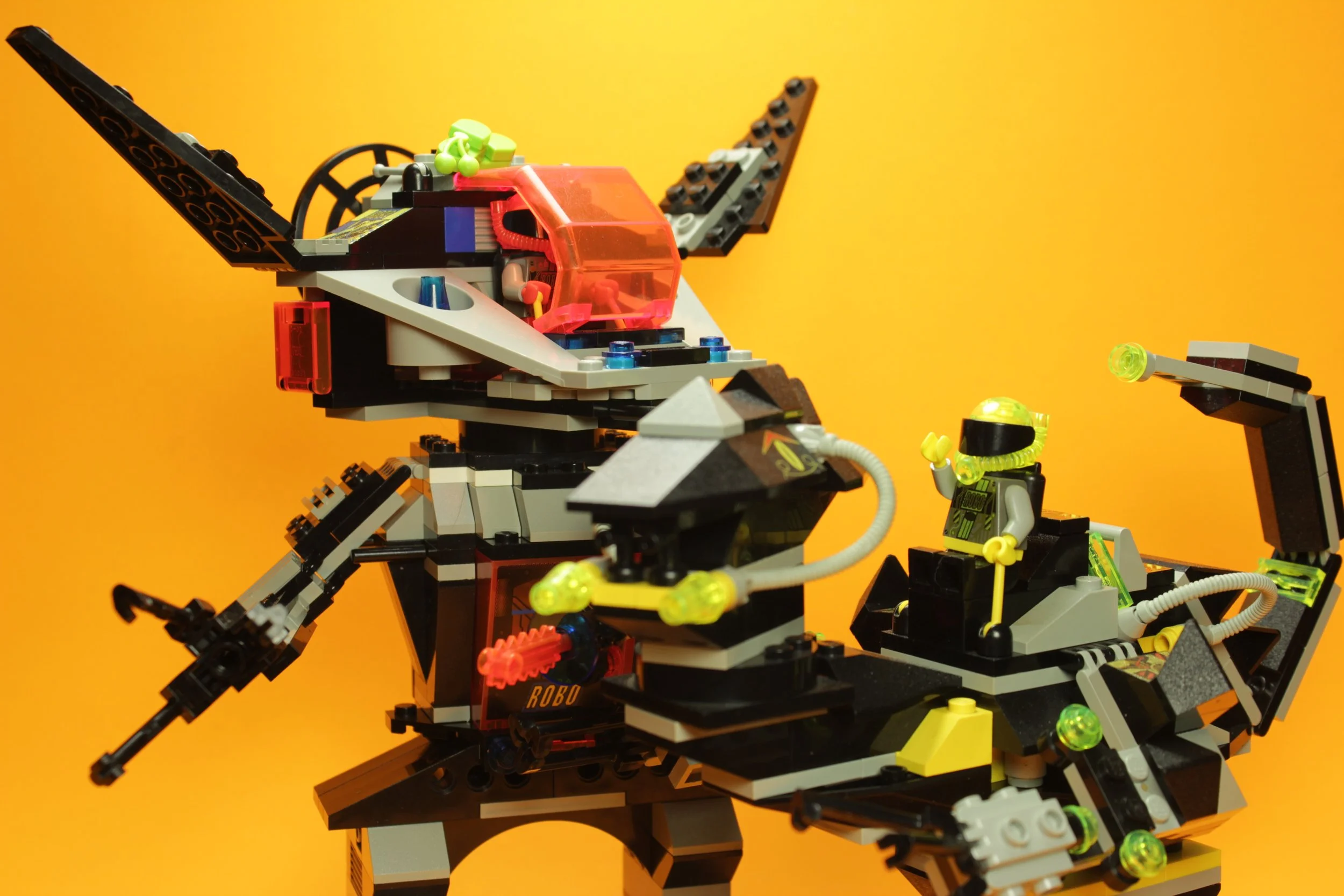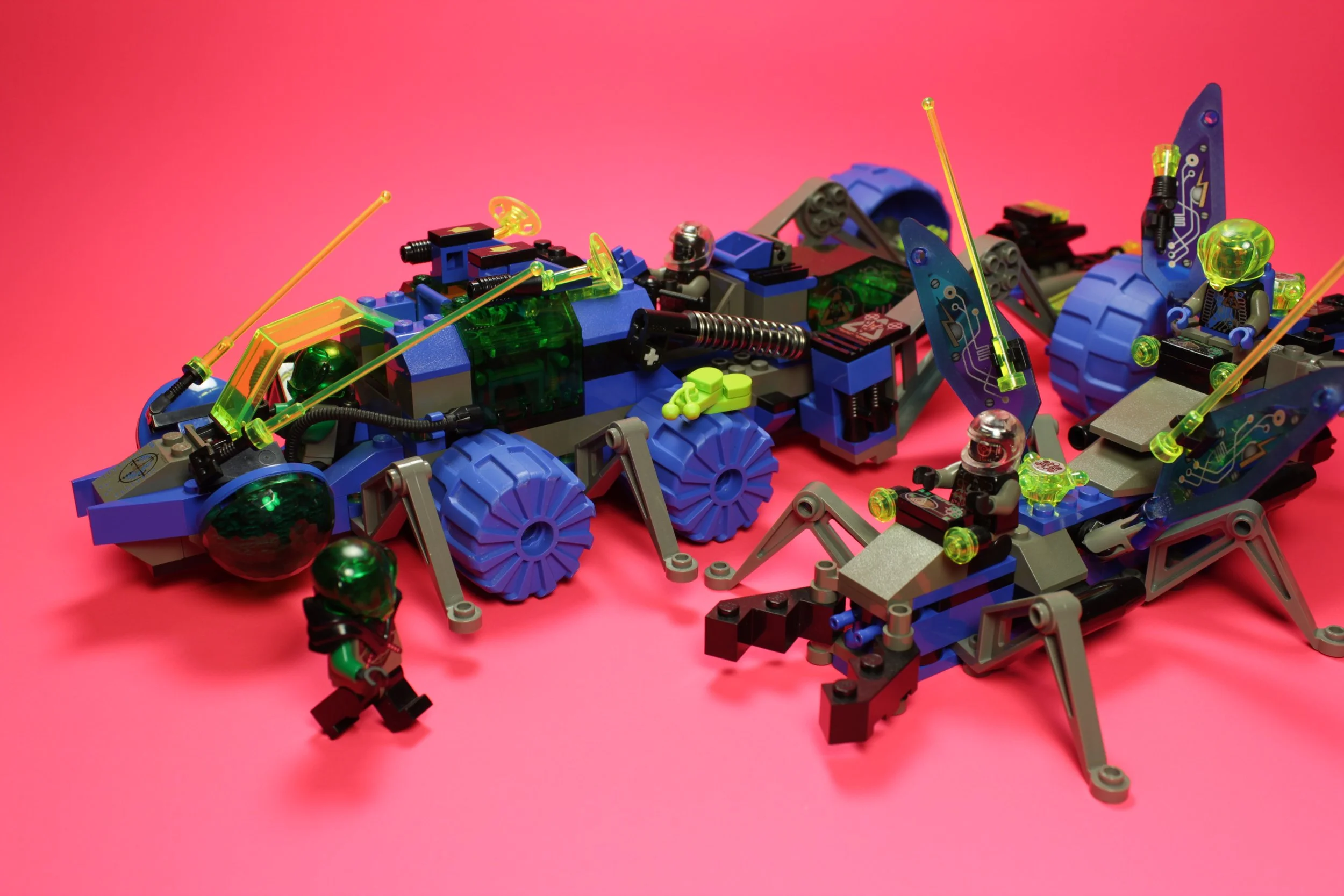Rock Raiders Is a LEGO Space Theme
/Today’s guest article comes from R.R. Slugger, a LEGO enthusiast and video creator who talks about his hands-on experience collecting every LEGO Space set released in the 1990s—including Rock Raiders.
Rock Raiders Is a LEGO Space Theme
I wear my love for LEGO Rock Raiders on my sleeve; to me, it really was the culmination of the evolution of LEGO Space in the 1990s. Released just before the turn of the century, Rock Raiders was a series that both signalled what was on the horizon for The LEGO Group while also waving farewell to its 90s Space compatriots of the previous decade.
Never has this throughline been more evident to me than during these past few months when I started making a conscious effort to collect every single LEGO Space set produced in the 1990s. As I was going through and creating my list, however, I noticed that Rock Raiders was notably omitted from online databases.
Both BrickLink and Brickset do not consider Rock Raiders to be a LEGO Space theme. In this article, I’d like to make the case that they are mistaken. Rock Raiders has deep roots in 90s Space, and the only way to explore this further is to go back to the beginning of the decade. So let’s take a look at the subthemes of LEGO Space so you can see the natural progression to Rock Raiders.
The Magnetic Attraction of M-Tron
M-Tron is a series that was completely foreign to me growing up. Only now, having had hands-on experience with every set in the theme do I understand why it is remembered so fondly.
Released in 1990, this red and black utilitarian space faction introduced us to what would become two mainstay elements of LEGO Space throughout this decade. The first of these two should be obvious enough – magnets! Ending with LEGO Rock Raiders in 1999, nearly every LEGO Space theme toyed with this play feature during this span of ten years.
The other element introduced by M-Tron is arguably a more forgotten contribution – the colour of Trans Neon Green! This bright neon colour is a significant component of the overall aesthetic of LEGO Space in the 90s and serves as a clear dividing line between M-Tron and what came before. While not often associated with M-Tron specifically these days, I think that only helps illustrate how prolific the colour became.
Back In Blacktron
Another previously unknown LEGO series to me, 1991 would see the return of Blacktron, a fan favourite from years past. Swapping out their Yellow accent colours for White and Trans Neon Green, this next generation of Blacktron would blend the old with the new – retaining the modularity gimmicks established in the 80s with the brighter colour design of the 90s.
One thing that struck me while building these sets is how geared towards exploration they seemed to be. We’ve always been told that Blacktron is a menace to space society, but perhaps it’s time for us to consider who was writing that narrative…
Keeping the Space Peace with Space Police II
In 1992, we would see the return of another LEGO Space subtheme – Space Police! With nary a trace of magnets nor Trans Neon Green, at first glance, it appears that Space Police II edges closer to its 80s roots than either M-Tron or Blacktron II; however, in reality, Space Police II marks a point of no return within LEGO Space. From here on out, the generic happy smile face print became a thing of the past.
Beyond that, Space Police II is also another shining example of inner-theme cohesiveness. M-Tron had magnets, Blacktron II had module gimmicks – Space Police II features jail cell pods that can be transported by many of the larger craft.
This theme also wins my personal accolades for having perfect parity between sets. Every single Space Police II jail pod is compatible with any other set revolving around the gimmick in a way that many other LEGO Space themes of this era lacked.
Ice, Ice, Baby
The pieces were in place for 1993’s Space subtheme to truly thrive, and Ice Planet 2002 took the baton and ran with it. Not only did it reintroduce the magnet system from M-Tron and unique minifigure head designs from Space Police II, but it even upped the ante by debuting a brand new colour – Trans Neon Orange! In retrospect, it’s hard to imagine 90s Space sets without this colour, as it quickly became the “Ying” to Trans Neon Green’s “Yang.”
In addition to this germination, Ice Planet 2002 also brought us our first expressly feminine face print within LEGO Space. While femininity within the series would remain a rarity, “Doctor Kelvin” here helped pave the way for others to follow.
Overall, I feel that Ice Planet 2002 represents the final significant milestone to be crossed for LEGO Space. From here, the groundwork had been laid for the following subthemes to succeed, each offering up their own small improvements or iterative changes.
Spy vs Spyrius
In 1994, we would see a new breed of intergalactic espionage – Spyrius! Their striking Black and Red design paired rather nicely with the muted Trans Dark Blue details, continuing the trend of LEGO Space utilizing simple colour palettes. Spyrius served as the first serious attempt at designing large LEGO robots in the 90s, and the foundational developments here would see fruition some years later.
Additionally, Spyrius includes our first android minifigure in “Major Kartofski,” and while that might not seem all that important, what is significant is that this was the first LEGO minifigure to feature leg printing! Something that has now become standard practice was completely novel in 1994 and would remain quite the rarity for a few more years.
The Mystery Of Unitron
Blurring the lines between 1994 and 1995, we have what is perhaps the most mysterious LEGO Space subtheme – Unitron! Comprised of only four sets (the largest of which released in 1994 with no mention of the subtheme name on its packaging), Unitron is the black sheep of LEGO Space in the 90s. So little is readily known about who or what this organization is meant to represent that I decided to do some digging.
The description I often see parroted ad nauseum (with no citation) is that Unitron is a more militaristic organization, here to combat the Spyrius threat; however, I can’t find any evidence of this within the sets themselves. Their largest craft, Star Hawk II isn’t armed to the teeth but rather features deployable scanners and cameras. LEGO Magazine descriptions seem to reflect this, often painting Unitron forces as generic space adventurers, ready for anything.
In fact, the name Unitron more often than not seems to represent the name of a planet – an intergalactic hub world where various factions interact. This seems to gel with this subtheme’s various bases and modes of transportation between them. As such, Unitron would also give the legendary LEGO Monorail system its final send-off.
Starlost Exploriers, The Exploriens
In 1996, we would be introduced to another brand of space explorers – the aptly named Exploriens! Demonstrating a return to the Black and White colour scheme of Blacktron II, Exploriens reverses the ratio and adds a bit of Trans Dark Blue into the mix. Expanding upon the well-established magnet gimmick, magnetic stickers were a new feature here, allowing the Exploriens to collect and analyze fossil samples from alien worlds.
From a construction standpoint, to me, Exploriens feels like a slight step backward in design compared to the progression we’ve seen so far. The largest models in the series, such as the epic Exploriens Starship are surely highlights, but some of the mid-tier offerings seem noticeably hollow and barren. There is archival footage that suggests Exploriens was being developed with VR elements integrated initially, and this caused me to ponder if the ultimate exclusion of those elements resulted in more naked lackluster builds?
If we classify 1990-93 as the “Early Years” of LEGO Space in the 90s, then Exploriens would mark the end of the “Middle Years.” This is the final subtheme to target those Classic Space sensibilities; everything beyond this point is truly alien…
Unidentified Flying Object
…and what better way to represent this than with 1997’s UFO? Quite arguably representing the most dramatic shift in the design language of the decade, building a UFO set feels fundamentally different to any previous Space subtheme due to the large moulded pieces on display. We saw a bit of this with Exploriens, but nothing to this degree; make no mistake, we’ve entered the “Later Years.”
In terms of gimmicks, UFO had them all. Magnets, motors, fibre optics, heat-sensitive stickers, and both Trans Neon colours were all featured within the subtheme. On top of that, in terms of printing, UFO very well might be The LEGO Group’s most profligate series to date. The Zotaxian minifigures are adorned head to toe with hyper-detailed print work, the likes of which dwarf any previous subtheme.
Where UFO begins to potentially falter is in its alternate builds. I haven’t made much mention of them yet, but LEGO Space is home to some of the best alternate builds the company has ever devised, in my opinion. Until this point, you were almost guaranteed to have at least one rather solid model on the back of the box; however, I think with UFO we start to see those larger moulds take their toll. This is largely subjective, of course, but the “Later Years” feature a noticeable dip in the quality of these models.
Before Exo-Force, Roboforce
I want to sidestep briefly to mention Roboforce, a small region-exclusive Space subtheme also appearing in 1997. Only consisting of a meager four sets, Roboforce makes good on the promises set by Spyrius – that being giant brick-built robots. While crude by modern standards, it’s remarkable to see how much development occurred in only three years!
These robots would be the last of their kind before the advent of ratcheted hinge joints in 1999, which changed the entire ballgame (before Galidor joints changed it yet again in 2002!)
It’s An Ugly Planet, A BUG Planet
Continuing in 1998, the Zotaxians return once again – this time as Insectoids! Largely serving as a continuation of UFO’s design decisions, Insectoids does offer one quite notable contribution to the mix in the introduction of Dark Grey as a brick colour. While the plastic colour itself dates back to the late 70s, for nearly two decades, it was almost exclusively used in axillary roles – tools, rock pieces, boat hulls, and the like. Insectoids brought this colour to the forefront, where it remained until its retirement in 2004.
Insectoids also doubled down on the electronic gimmicks of its predecessor by featuring a large “lights and sounds” brick within several sets. Hokey by today’s standards, this felt right at home within the toy landscape of the 90s, though it is up to debate whether or not it was utilized well here.
With bug legs and wings of various sizes, Insectoid sets once again pioneered new large mould pieces that were swiftly scuttled not long after their introduction. Unsustainable for the company from a financial standpoint, no doubt, one must admit that they are at the very least utilized well here.
Rock Raiders – The Final LEGO Space Theme of The 1990s
Finally, we arrive at 1999 and the contested inclusion of Rock Raiders on my LEGO Space list. Even though neither Brickset nor BrickLink list Rock Raiders as a Space theme, here’s why I think they’re wrong:
LEGO Rock Raiders follows the throughline set in motion by every previous Space subtheme. To start with, it features both Trans Neon colours and the magnet system borrowed from the “Early Years.” In fact, the Tunnel Transport actually utilizes a fairly late addition in its magnet adapter, only previously being used within LEGO Space in the Insectoids subtheme.
The general refinement and minifigure design indicative of the “Middle Years” can also be found here, and Rock Raiders was actually frustratingly close to having leg printing in its retail releases as well. Still, the design work we did receive was top-notch and definitely reflects the direction LEGO Space was trending at the time.
The large single-piece moulds, Dark Grey colour, and big electric gimmicks of the “Later Years” are also all hallmarks of the theme. In addition to all of the above, Rock Raiders is also the first time we see a feminine face print return to a “human” character within LEGO Space after “Doctor Kelvin” started it all.
In terms of new contributions, Rock Raiders was a true pioneer in colour palette selection, breaking away from the simpler choices made by previous LEGO Space subthemes. Rock Raiders has all the trademarks of LEGO Space, even if we don’t see them mixing it up with the other subthemes within LEGO catalogs (a practice dropped by 1998, anyways).
In short, Rock Raiders is just the next step forward taken by LEGO Space as a series, and I don’t think it should be excluded when discussing its history. Even though 2001’s Life On Mars is often credited as a LEGO Space theme, I think there’s a strong argument to be made that Rock Raiders is more deserving of that categorization instead.
The journey of LEGO Space in the 90s ends with Rock Raiders.
Head to R.R. Slugger’s YouTube channel to find out more about Rock Raiders and watch more than a hundred other nerdy deep dives!
Best of BrickNerd - Article originally published August 15, 2023.
Do you think Rock Raiders should be considered a LEGO Space sub-theme? Let us know in the comments below!
Do you want to help BrickNerd continue publishing articles like this one? Become a top patron like Charlie Stephens, Marc & Liz Puleo, Paige Mueller, Rob Klingberg from Brickstuff, John & Joshua Hanlon from Beyond the Brick, Megan Lum, Andy Price, John A., Lukas Kurth from StoneWars, Wayne Tyler, LeAnna Taylor, Monica Innis, and Dan Church to show your support, get early access, exclusive swag and more.

